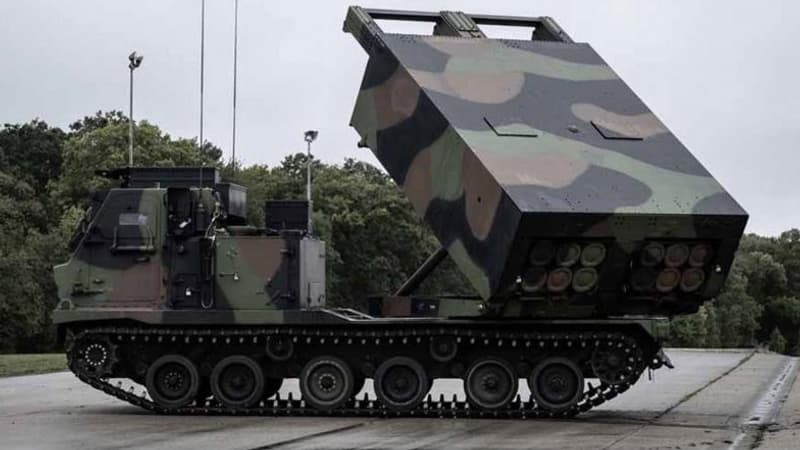The deputies Jean-Louis Thirioiot (LR) and Matthieu Bloch (UDR) smile at the alarm in a parliamentary report: France runs the risk of being destitute of long-range artillery capabilities, if nothing is quickly carried out to replace the rocket launch system units, which will reach obsolescence by 2027.
In the criterion of the concept of war of “high intensity”, the recurries explain that in the absence of aerial superiority, as is the case in the conflict in Ukraine, the artillery plays “a central role”. According to the data collected, in Ukraine, “almost 70% of the enemy’s destruction, especially in the first phase of the war, result from artillery attacks.”
Designed in a rich chassis, the Unit Rocket Launcher can take 12 rockets and shows a range of 15 to more than 70 kilometers. It was briefly used in Mali as part of Operation Serval/Barkhane in 2016. Three copies are currently deployed in Romania.
Problem: Only nine copies are left in the Army, according to a study carried out by IFRI published in November 2024, four systems were ceded to Ukraine, despite the fact that the Military Programming Law (LPM) 2024-2030 provides an objective of at least 13 long-range strike systems at the end of 2030, 26 in 2035.
With this in mind, and although the French LRU could be unusable in two years due to the absence of spare parts, it becomes urgent and imperative to develop a system to replace them as soon as possible.
The deputies deplore “the non-anticipation before 2023 of the temporary rupture of the LRU, despite the fact that the usefulness of the unit rocket launches had been widely demonstrated in conflicts before February 24, 2022, such as the Hout-Karabagh War.”
Plan “After-Lru”
Jean-Louis Thirioot warns: we must develop “a sovereign solution, but subject to go quickly and be able to do it at an acceptable cost.”
The preparation phase of the “Long Range Terrestrial Strike” program was launched in 2023. Two consortiums launched development works in 2024: Safran and MBDA, on the one hand, Thales and Arianegroup on the other. According to the initial calendar, a first demonstration must take place in April 2026 and the launch in 2030, “is late,” according to the deputy.
In addition, the program would have been late, an additional concern for the rupture of the army’s ability.
In the report other alternatives are mentioned: a “shelf” purchase solution of an already operating foreign system (American Himars, K239 of South Korea, German-Israeli European Pinaka, India), but also the project of the French company Turgis & Gaillard, which has just presented its main lamps, potentially capable of taking the LRU Reli in 2027. of development.
Source: BFM TV


